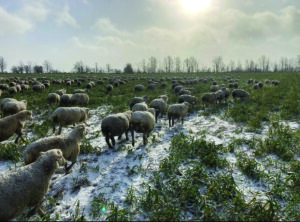In the news
NEWS BITES THAT MATTER
Suncor Energy doubles production in Sarnia
The expansion of the Suncor Energy St. Clair Ethanol plant near Sarnia has been resumed. The $120 million construction project, expected to be completed in late 2010 or early 2011, will double the plant’s current ethanol production capacity from 200 to 400 million litres per year.
According to the company, the project will benefit the Sarnia-Lambton area through the creation of 350 jobs during construction and 15 new jobs to operate the expanded plant. The plant will also support the demand for approximately 40 million bushels of corn annually.
“The St. Clair facility is the platform for growth of Suncor’s biofuels portfolio and today’s announcement not only reinforces our commitment to increasing renewable energy options in Canada, but builds on the strength of local relationships forged in St. Clair Township and the Sarnia-Lambton Region,” said Jay Thornton, Executive Vice President, Energy Supply, Trading & Development.
Suncor says that the expanded ethanol plant, along with their investment in four wind power projects across Canada, is expected to offset nearly one million tonnes of carbon dioxide per year – the equivalent of the annual tailpipe emissions of approximately 200,000 cars. •
Planting deadlines changed for Production Insurance plans
Agricorp has adopted the new CHU map and used it to define planting deadline areas this fall. The map was developed by OMAFRA last spring using current weather and crop management information. Agricorp has recognized that the use of the new CHU map has resulted in an earlier planting deadline for some producers.
Farmers in the northern part of Huron County, pockets in Wellington County and a few other small areas, are affected by changes to earlier planting dates according to the new CHU map.
For winter wheat, Lindsay Barfoot, Agricorp account lead for grain and oilseed crop insurance plans, has confirmed that the planting deadlines used in the past will hold up this year, regardless of changes to the CHU map. “Our regional managers have been instructed and authorized to determine if the new CHU map is creating an inconsistency in certain areas,” says Barfoot. If there are inconsistencies in the area, “the plan is to approve those acres for insurance based on the deadlines used in previous years.”
“Generally speaking, whatever our planting deadlines have been for areas in the past, we’re happy with those and, at this time, we have no intention to change our spring seeded planting deadline dates,” Barfoot continues.
Agricorp will be reviewing the experience gained this fall and will consult further with OMAFRA about the use of the new CHU map to determine how best to set and communicate planting deadlines for spring-seeded crops in 2010. •

















